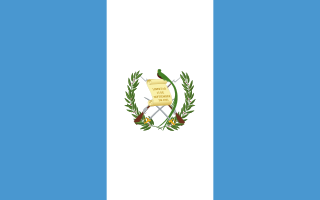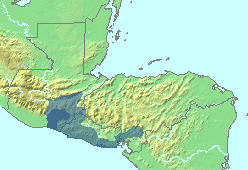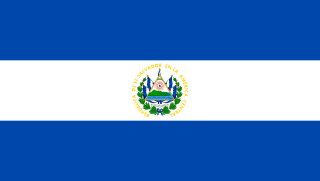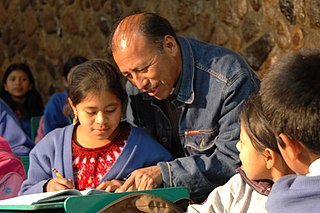Related Research Articles

This is a demography of the population of Guatemala including population density, ethnicity, education level, health of the populace, economic status, religious affiliations and other aspects of the population.

The Mayan languages form a language family spoken in Mesoamerica, both in the south of Mexico and northern Central America. Mayan languages are spoken by at least six million Maya people, primarily in Guatemala, Mexico, Belize, El Salvador and Honduras. In 1996, Guatemala formally recognized 21 Mayan languages by name, and Mexico recognizes eight within its territory.

An extinct language is a language with no living descendants that no longer has any first-language or second-language speakers. In contrast, a dead language is a language that no longer has any first-language speakers, but does have second-language speakers or is used fluently in written form, such as Latin. A dormant language is a dead language that still serves as a symbol of ethnic identity to an ethnic group; these languages are often undergoing a process of revitalisation. Languages that have first-language speakers are known as modern or living languages to contrast them with dead languages, especially in educational contexts.

The Maya are an ethnolinguistic group of indigenous peoples of Mesoamerica. The ancient Maya civilization was formed by members of this group, and today's Maya are generally descended from people who lived within that historical region. Today they inhabit southern Mexico, Guatemala, Belize, and westernmost El Salvador and Honduras.

Mesoamerican languages are the languages indigenous to the Mesoamerican cultural area, which covers southern Mexico, all of Guatemala, Belize, El Salvador, and parts of Honduras, Nicaragua and Costa Rica. The area is characterized by extensive linguistic diversity containing several hundred different languages and seven major language families. Mesoamerica is also an area of high linguistic diffusion in that long-term interaction among speakers of different languages through several millennia has resulted in the convergence of certain linguistic traits across disparate language families. The Mesoamerican sprachbund is commonly referred to as the Mesoamerican Linguistic Area.

Guatemalans are people connected to the country of Guatemala. This connection may be residential, legal, historical or cultural. For most Guatemalans, several of these connections exist.

In a protracted conflict during the Spanish colonization of the Americas, Spanish colonisers gradually incorporated the territory that became the modern country of Guatemala into the colonial Viceroyalty of New Spain. Before the conquest, this territory contained a number of competing Mesoamerican kingdoms, the majority of which were Maya. Many conquistadors viewed the Maya as "infidels" who needed to be forcefully converted and pacified, disregarding the achievements of their civilization. The first contact between the Maya and European explorers came in the early 16th century when a Spanish ship sailing from Panama to Santo Domingo was wrecked on the east coast of the Yucatán Peninsula in 1511. Several Spanish expeditions followed in 1517 and 1519, making landfall on various parts of the Yucatán coast. The Spanish conquest of the Maya was a prolonged affair; the Maya kingdoms resisted integration into the Spanish Empire with such tenacity that their defeat took almost two centuries.
Chiquimulilla is a town and municipality in the Santa Rosa department of Guatemala. It is located about 20 kilometres (12 mi) from the Pacific coast.

Nueva Santa Rosa is a town and municipality in the Santa Rosa department of Guatemala. The municipality has a population of 36,464 and cover an area of 147 km2.
San Juan Tecuaco is a municipality in the Santa Rosa department of Guatemala.

Xinca is a small extinct family of Mesoamerican languages, formerly regarded as a single language isolate, once spoken by the indigenous Xinca people in southeastern Guatemala, much of El Salvador, and parts of Honduras.
The Xinka, or Xinca, are a non-Mayan indigenous people of Mesoamerica, with communities in the southern portion of Guatemala, near its border with El Salvador, and in the mountainous region to the north.
The Lencan languages are a small linguistic family from Central America, whose speakers before the Spanish conquest spread throughout El Salvador and Honduras. But by the beginning of the 20th century, only two languages of the family survived, Salvadoran Lenca or Potón and Honduran Lenca, which were described and studied academically; Of them, only Salvadoran Lenca still has current speakers, despite the fact that indigenous people belonging to the Lenca ethnic group exceed between 37,000 and 100,000 people.

Salvadorans, also known as Salvadorians, are citizens of El Salvador, a country in Central America. Most Salvadorans live in El Salvador, although there is also a significant Salvadoran diaspora, particularly in the United States, with smaller communities in other countries around the world.

Macro-Chibchan is a proposed grouping of the languages of the Lencan, Misumalpan, and Chibchan families into a single large phylum (macrofamily).
Alagüilac is an undocumented indigenous American language that is thought to have been spoken by the Alaguilac people of Guatemala at the time of the Spanish conquest. It is also called Acavastlan, Acasaguastlán, or Acasaquastlan, after the location where it was recorded.
Jumaytepeque is an extinct Xincan language of Guatemala that was spoken in the region of Jumaytepeque. It was discovered by Lyle Campbell in the 1970s.
Guazacapán is a moribund or extinct Xincan language that was spoken in the region of Guazacapán in Santa Rosa Department, Guatemala. It has only a single semi-speaker as of 2014.
Yupiltepeque is an extinct Xincan language of Guatemala, from the region of Yupiltepeque.

Intercultural bilingual education in Guatemala was begun as part of a 20th-century educational reform effort intended to promote the country's cultural diversity. The programs merge Mayan language and culture with Spanish language and Ladino culture, a shift from the assimilation policy of educational programs promoting Spanish literacy which reduce the use of indigenous languages. During the 20th century, education reform evolved from castilianization and the 1965 Bilingual Castilianization Program to the 1980 National Bilingual Education Project. Each program aimed to increase Spanish fluency. In 1985, the Constitution legalized bilingual education and the Ministry of Education formed the Programa Nacional de Educación Bilingüe (PRONEBI). PRONEBI developed from the 1980–1984 National Bilingual Education Project, and aimed to provide bilingual education for rural indigenous children.
References
- ↑ Frauke Sachse (2010) Reconstructive Description of Eighteenth-century Xinka Grammar. PdD dissertation, University of Leiden
- ↑ "Did you know Chiquimulilla Xinka is awakening?". Endangered Languages. Retrieved 2023-11-29.
- ↑ "Xinca Words (Xinka, Xincan)". www.native-languages.org. Retrieved 2023-11-29.
- Campbell, Lyle (1997). American Indian languages: The historical linguistics of Native America. New York: Oxford University Press. ISBN 0-19-509427-1.